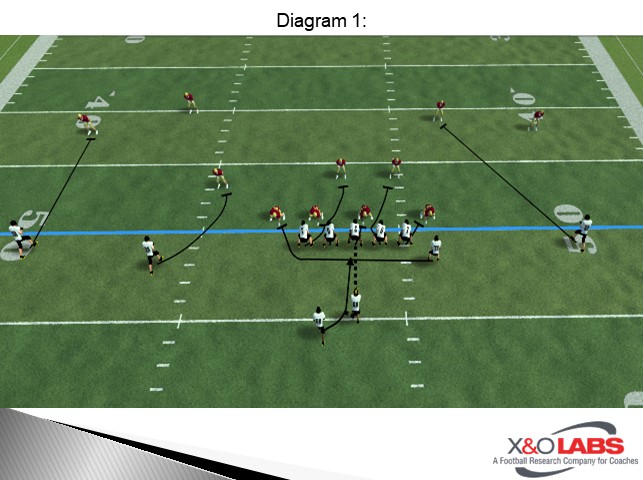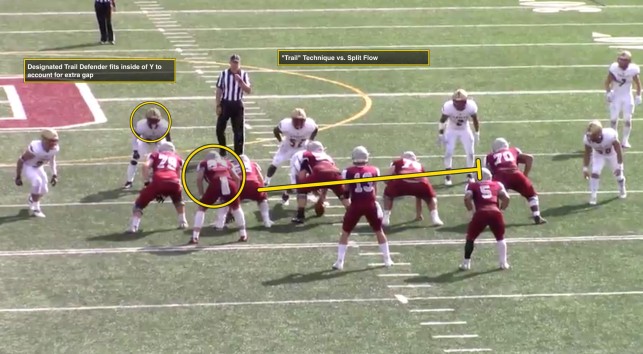By Mike Giancola
Defensive Coordinator
Bridgewater College (VA)
Twitter: @CoachGiancola
Zone schemes have been a regular staple of offenses across the country for close to two decades now. Athletes on the football field year in and year out continue to get faster and more athletic, allowing offenses to be more dynamic. The fluidity of zone schemes let coordinators be more "simplistic" in concept while also taking advantage of potential mismatches in the run game, allowing for a play to hit in several different gaps based on the blocks up front and the reads by the tailback. Just like any other base scheme, zone runs evolved over time. With the heavier use of 20 personnel and Y-Off 11 personnel sets in today’s game, many offenses utilize the split-back inside zone play.

The difficulty in defending the split-back zone comes from the extra gap created on the backside of the play with the slicing sniffer. The question defensive coordinators need to answer is: how do account for the extra gap? Here we will discuss various ways to remain gap sound in defending the split-back zone.

Defending Split-Back Zone
Depending on our defensive call, we have four ways we will defend the split-back zone. The idea behind each is to keep gap integrity while providing adequate numbers in the box to allow for one of our defenders to be unblocked to make the tackle:
- Screw Down a Safety
- Treat the Sniffer as a Pull
- Trail the Sniffer
- Rat the Sniffer
Situational Implementation
As a staff, much of the teaching we do in terms of our scheme is done conceptually. We found (through copious amounts of trial and error) that teaching this way allows players to take ownership of the scheme, think less, and play faster. As such, we will pair the different approaches to defending split back zone with our front calls.
As we install fronts and teach our run fits, each front has a base fit and corresponding rules. Simple call tags (discussed below) can slightly adjust these rules to better defend certain offensive schemes. A simple guide for when we use these concepts is:
- Screw = Base Even Front Call
- Sniffer Pull = Adjusted Even Front Call (keep 4 shell)
- Trail = Base Odd Front Call, Adjusted Tight Front Call
- Rat = Base Tight Front Call
Screwing Down a Safety
The easiest way to account for the extra gap created in a split-back zone is to screw down the weak safety. A “Screw” call for us creates an 8-man box that protects the defense not only against the split-back scheme, and it also accounts for offenses whose QB is a running threat. We will most often make a Screw call when we determine there is more than one back in the backfield. Based on aligned of an off Y, especially if he is in the core (between the tackles), we will treat him as a back. Matching numbers for numbers in the box is the simplest way to account for all gaps while also having an unblocked hat (possibly 2) to make the tackle.









